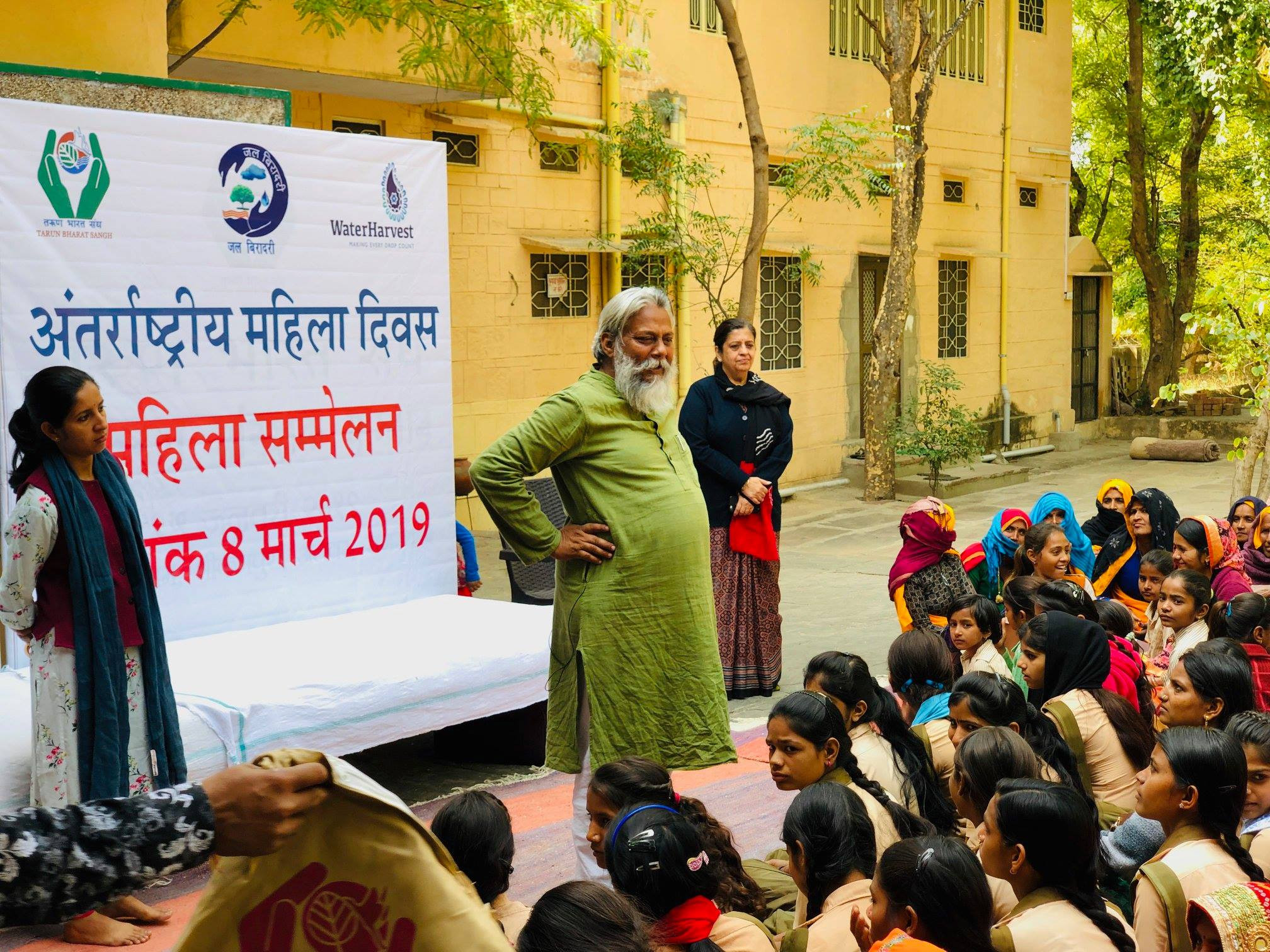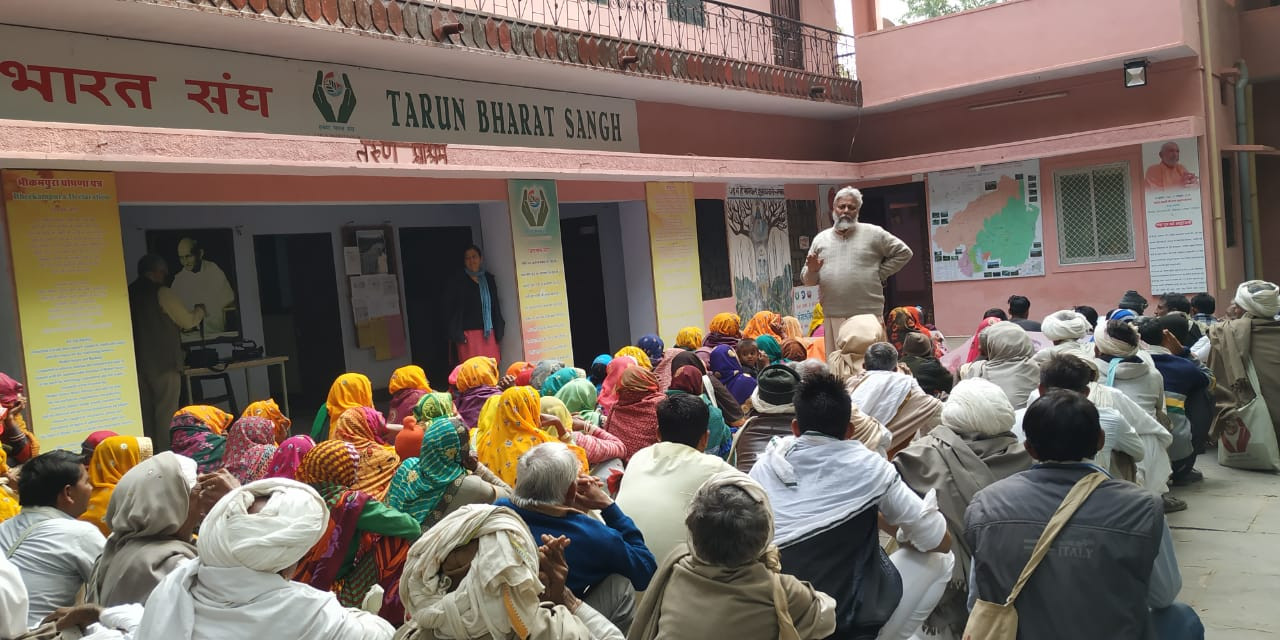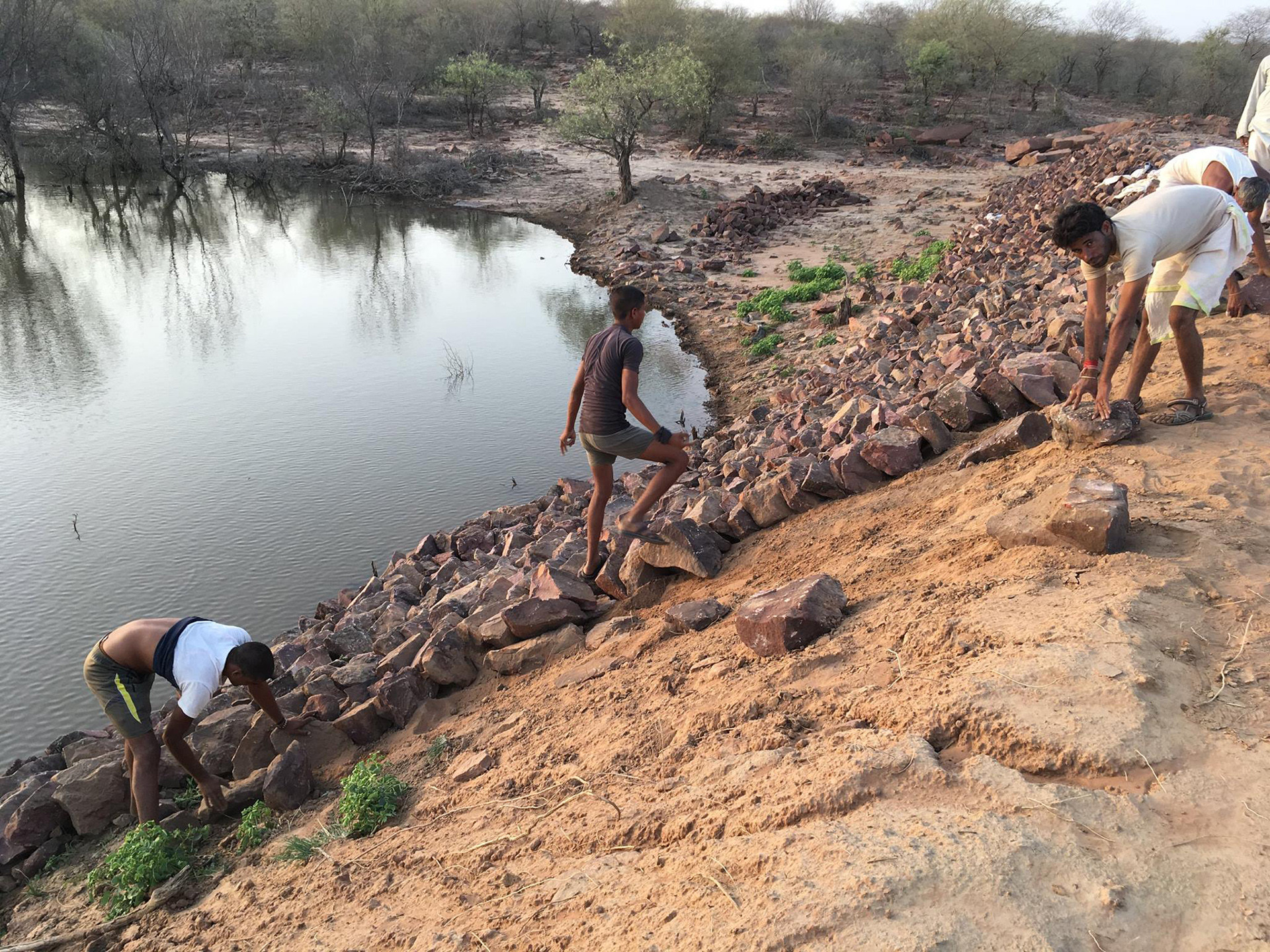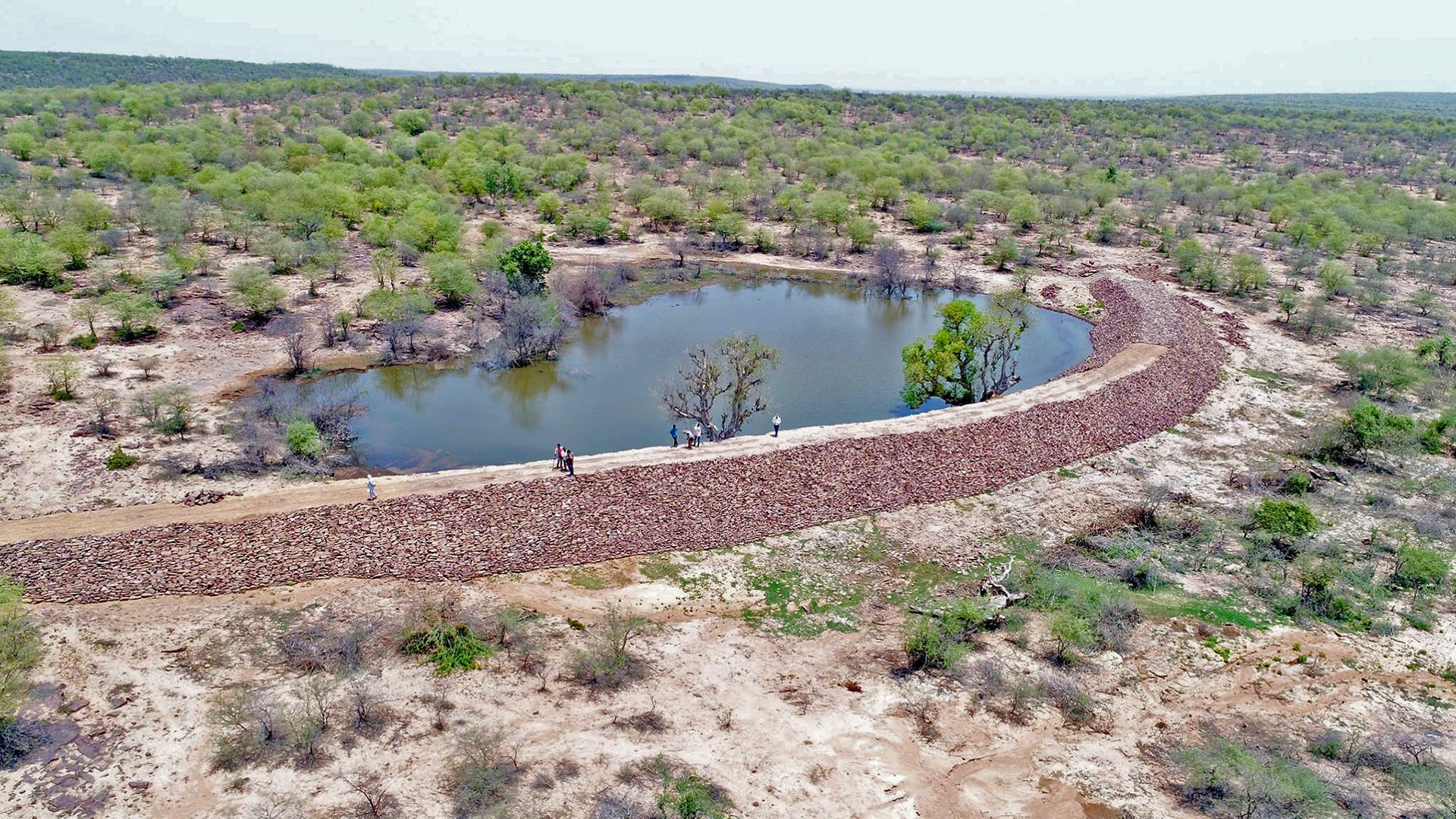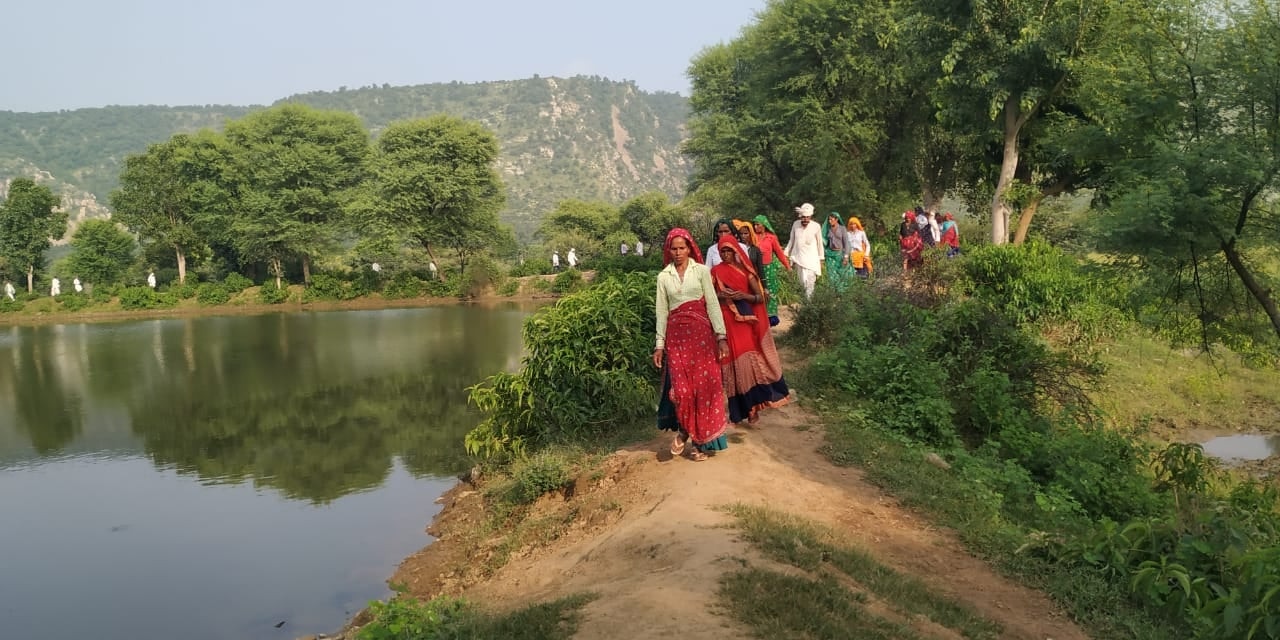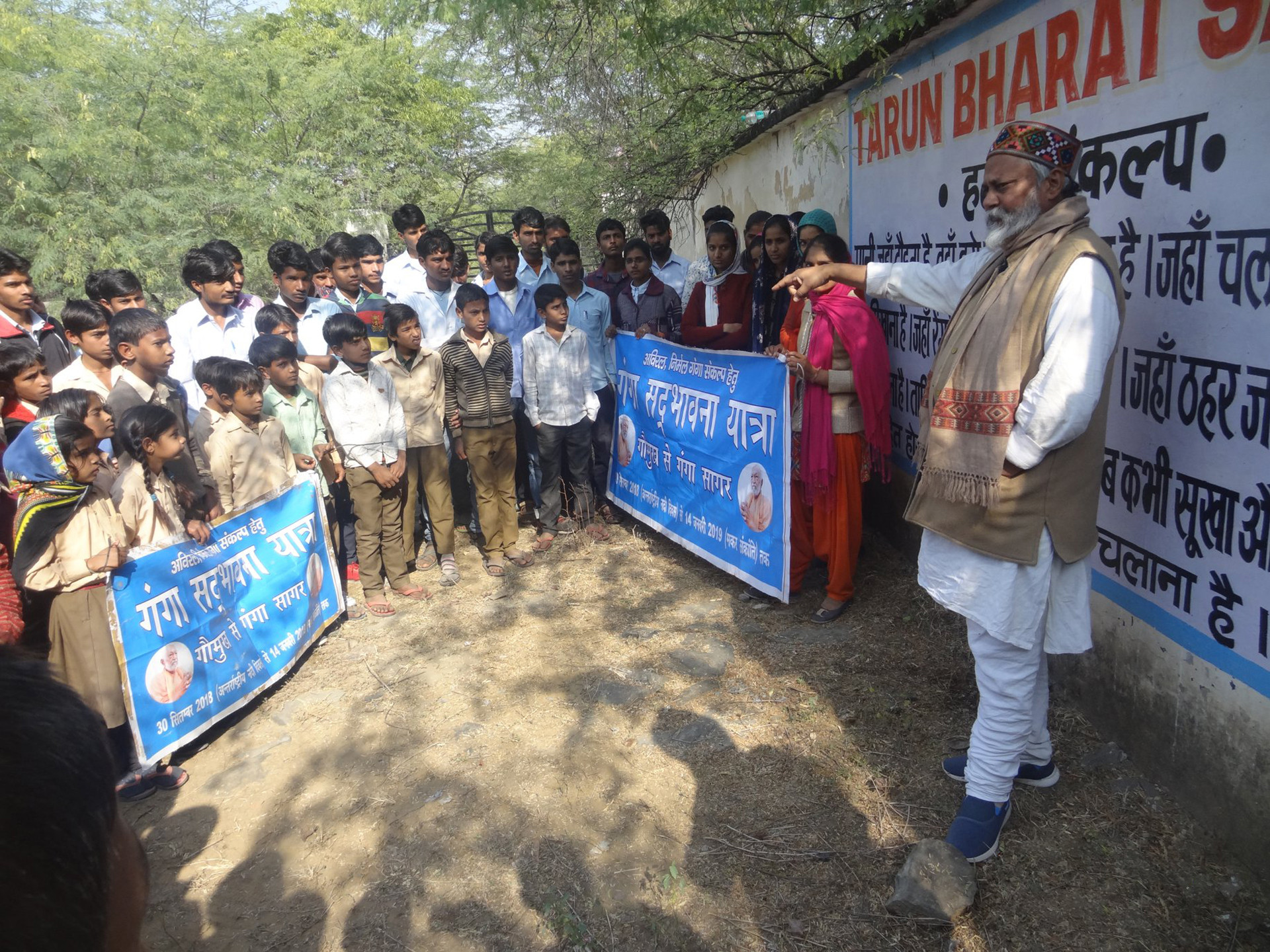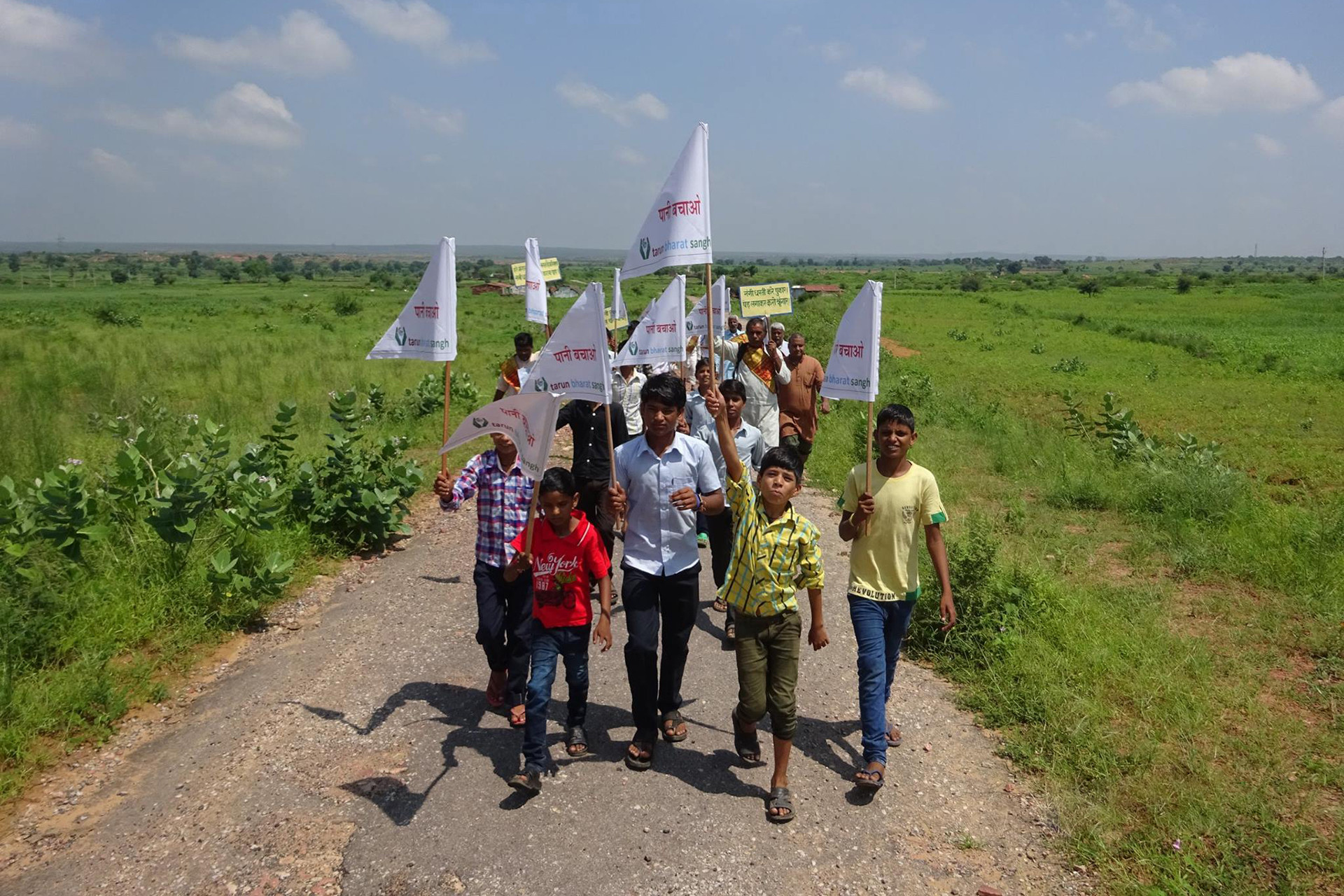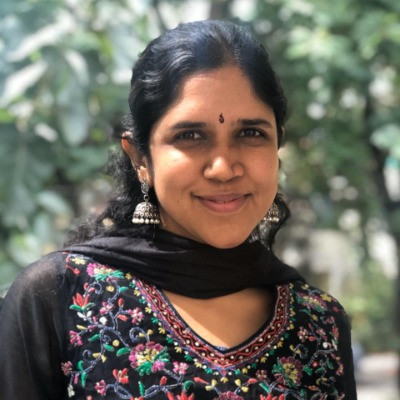This is the seventh story in a series of articles launched by Astral Pipes and Nature inFocus to create awareness about the ongoing water crisis and to encourage necessary action to address it.
In 2008, The Guardian published a list of '50 people who could save the planet.' A responsibility of massive proportions nonetheless, this list has names of eminent scientists, physicists, entrepreneurs and our very own water warrior — Rajendra Singh.
Water Conservationist, Rain Man of Rajasthan, Waterman of India, Jal Parush — Rajendra Singh is known by many monikers, but none manage to capture the enormity of his work that spans four decades. His NGO, Tarun Bharat Sangh, based out of Alwar, Rajasthan has been working on bringing water security to more than 1200 villages across 15 districts within the state. By employing the traditional johad method (percolation ponds that collect rainwater), he has managed to convert barren landscapes to agricultural havens. For his work, he was awarded the Ramon Magsaysay Award in 2001, the prestigious Stockholm Water Prize in 2015, and the Ahimsa Award by the Institute of Jainology, United Kingdom in 2016, gaining him international recognition.
An ayurvedic doctor who turned to water conservation, Singh has been ardently vocal about the protection and rejuvenation of rivers in our country. Not one to mince words, he expresses his disappointment at government agencies and civil bodies, often with a poetic flair that highlights the issues at hand. For example, when asked about his war against privatisation of water, Singh said, “Desh ke logon ko peene aur jeene ki liye paani nahi hai aur ye paani ka bazaar banana chahte hai.” (Citizens don’t have enough water for their basic needs, and here they i.e. government agencies want to make a commodity of the resource.)
Under his tutelage, Tarun Bharat Sangh has been instrumental in forming various entities to promote and create awareness about water conservation and the protection of water bodies. The Rashtriya Jal Biradari or National Water Community was formed in April 2001 at the National Water Convention held in Rajasthan. This committee brings together farmers, researchers, NGOs and other interested individuals, across states, to work on pertinent water-related issues. The Jal Jan Jodo Abhiyan is a similar initiative that focuses on mass mobilisation through walks, discussions and rallies, for the protection of our water bodies. Most importantly, Singh has promoted community-based water management. Through Gram Panchayats (village councils) and Pani Panchayats (water councils), he ensures people are equal participants in finding solutions for their water problems. He also worked to end illegal mining in the Aravallis, Rajasthan, and the rejuvenation of the Arvari River in Rajasthan. He was one of the members of the National Ganga River Basin Authority and is a founding member of the UK-based NGO Flow Partnership.
In pure Hindi, Rajendra Singh talks about why we need more work on the ground, and how we should be measuring our water conservation efforts. Here’s a translated version of the conversation.
You have been working on water conservation for four decades. How do you respond to the fact that we are scrambling for options to address the crisis, when we are knee-deep in it?
I began working on water conservation in 1985 in Gopalapura village. The fact that water scarcity can bring people’s lives to a complete halt was something I experienced first-hand back then. I saw that the youngsters had moved out of their villages because of water scarcity, and this displacement opened my eyes to the bigger picture. I stopped healing people and began working on healing dharti (Earth), knowing that in the future, water would be our biggest concern. And, you see this happening now at a much bigger scale. More than half of the countries in Africa experience severe water shortage. People are leaving their countries because they do not have access to water, and we have a term for that as well — climate refugees. Bepani hoke log ujad rahe hai (People are withering without water). This is why I have been promoting water conservation all this while.
It is true that people have become aware of the crisis, and are talking about it. But my concern is, they are still only talking about it. People need to be working on the ground. I don’t see serious efforts to make amends for the damage we have all done to the climate and our water bodies. Most importantly, I don’t see changes in people's behaviour. Their behaviour towards nature has to change, and they have to change the way they act in their daily life. Yes, we are knee-deep in a water crisis, but this was long coming. Where are the efforts to combat this?
Your work in rural Rajasthan began with an attempt to promote health and education. How did you turn to water conservation?
I moved to rural Rajasthan to work for the upliftment of the villages, so the youngsters living there wouldn’t feel the need to move to cities. It was actually a spur-of-the-moment decision. We (a few members of Tarun Bharat Sangh and I) boarded a bus from Jaipur to the rural areas, and I asked the conductor to give us a ticket for the last stop. When we got down, the elderly in the village thought we were terrorists, and they locked us in a Hanuman temple nearby. In the morning, the priest threw us out. From there I went to Gopalpura village where, in a chance encounter, I met Mangu Kaka (uncle), a village elder. I was working on addressing night blindness in the region, and the disease was at an all-time high. It was not just the older people who were affected; youngsters were equally impacted. This was because people did not have adequate nutrition. As a doctor, addressing this issue became my initial focus. But Mangu Kaka steered me to the path of water conservation. He said to me that we need water before medicines and education. “If you can work on bringing us water, you would be solving many issues for us,” said Kaka. His simple yet stern plea changed my life.
I kept my doctor’s degree aside and got ready to learn about water, which I did in two days. In fact, my training from Mangu Kaka was so thorough that I feel like I have completed two PhDs — one in hydrogeology and one in environmental engineering. I was asked to venture into deep, dry wells, while Kaka shouted from the top — kya dekha (what did you see?). This is how I learnt about confined and unconfined aquifers and how they impact water storage properties. I also learned to look at the root systems of the vegetation in a region to understand the water availability in the soil.
I was taught by someone who never went to school, and yet, to this day, I apply the principles he taught me. This really makes me question, what has education taught us all? Considering where we are with the water situation, it looks like what we have learnt is how to encroach and exploit natural resources, and pollute our water bodies.
Please tell us a little bit about the work Tarun Bharat Sangh is doing with respect to water conservation?
The organisation was originally created in 1975 to aid the teachers and students who were impacted by a fire incident at the Rajasthan University. Back then, our work focused on providing the right opportunities to youngsters, but we later moved on to empowering the villages of Rajasthan and working on rural water security.
Today, we have an impressive track record. We have built about 11,800 water conservation structures — johads and check dams. We have completely transformed about 10,700 sq.km. of parched land. Once the wells in these villages were filled with water, people who left villages for cities came back and began farming in their fields. 17 lakh people have returned to their roots. But these numbers are not a day's work, it takes years of struggle. The biggest challenge for us was that we were working in a region that received extremely low rainfall, and whatever did reach the landscape was lost because of the excessive heat. Mujhe pani ko sooraj ki nazron se bachana tha (I had to protect water from the eyes of the sun). I began looking for ways to control evaporation loss and conserve moisture in the soil. This is why, where I found natural depressions and confined vertical fractures, I would create johads. They first collect rainwater and let it seep into the ground. The underground aquifers recharge themselves in this manner, and the sun cannot steal this water. We have rejuvenated rivers like Ruparel, Sarsa, Arvari, Bhagani, Jahajwali, and Shabi in Rajasthan. We always involve the villagers in everything we do. They partake in all the discussions and decisions.
Apart from increasing awareness about water conservation, we are now also working on river rejuvenation in other states. In Maharashtra, for example, we are working on the Agarani River Basin where there are about 21 villages. We are planning on installing natural water harvesting structures there.
According to the Dynamic Ground Water Resources of India report by the Central Ground Water Board, 22% of the groundwater in our country is in a critical state or is being over-exploited. Should we focus on traditional water conservation methods to replenish our aquifers?
Absolutely. In fact, I would like to add that the answer lies only within traditional methods. They are time-tested, and they ensure long-term sustainable results — which is what we need now. Traditional knowledge takes into account the geography of a particular place and provides relevant solutions. Also, these water harvesting structures work on addressing the issue from the root, rejuvenating the connecting streams and rivers. This changes the overall landscape. I know this because I have experienced these results in Rajasthan.
Coming back to the numbers you mentioned, yes 22% of the groundwater in our country is at a critical stage. But, the other 70 odd per cent is overdrafted — which means we draw more than we replenish. We are spoiling the health of our aquifers, and if we keep discharging groundwater at this rate, we will reach a point of no return. As reports indicate, this is fast approaching. So many years of damage has gone into what we see now in the form of this data. Although data is important, it is now time to work on reversing this. Let’s focus on replenishing our groundwater.
You have also led many awareness campaigns to highlight the level of pollution our rivers and water bodies are facing. In most cities, local communities are coming together to address this issue. What would you like to say to them?
I am happy that people are coming forward to change the lakes and their local water bodies. But very often, I find this work to be at a superficial level. I would like to encourage them to work on restoring their water bodies wholly, going beyond beautifying the space. The goal should be to create perennial water sources, and to do that, we need to separate sewage from these water bodies. This is not a small task. I understand having parks and walkways makes an impact, but that should come later. First, ensure that your water is not getting polluted. Work towards replenishing underground aquifers and solving water issues such that the impact is long-term.
This also teaches us to measure our conservation success differently. The way I see it, the end goal should be that your work creates an overall healthy environment. This includes healthy water bodies and healthy individuals who live around these water bodies. You have to look at the larger picture. This is something that we are constantly working on in Tarun Bharat Sangh — to spread the awareness that water health and human health are related. The ‘Rashtriya Jal Chetna Yatra’ that we did in 2002, went on for 14 months where people raised awareness about all of this in 320 districts across the country.
How can we incorporate water conservation in our education system?
This is very important and essential at the moment. I would like all the state governments and municipal bodies to work towards incorporating water conservation in the syllabus at the school as well as college levels. This has to be a part of the curriculum. Agricultural universities need to come up with more realistic solutions to address water scarcity and climate change. We have to link crop patterns with rain patterns in our agro-ecological zones. There is so much biodiversity in these areas — we must respect that. Unfortunately, I don't see such work coming from them.
There are a lot of scientific papers being published about these topics, but what about an actual solution that works in these difficult times? I want something to stem from all this research which will address climate change adaptation. We have done this in our villages through traditional knowledge, and we were able to use water and save water efficiently. In our region, land for agriculture has increased tremendously. A direct impact of this has been that vegetable consumption has increased among people, and the kind of cereals and pulses that they have access to has improved. New markets have sprung up across villages, increasing employment. Water has the potential to change everything for the better.
Please tell us a little bit about Tarun Water School.
We established Tarun Jal Vidyapeeth to promote functional water literacy. Wherever people need information about water conservation techniques, we are happy to help. This is a chalta-phirta (mobile) school. We also offer six different courses, and anyone interested can enrol in one of them. These courses are:
Jal Nayak or Water Leaders — For people interested in working at the policy level.
Water Warriors — For people interested in working to stop the pollution and exploitation of water bodies.
Jal Premi — For people interested in facilitating water harvesting structures and recharge units.
Jal Dhoot — For people interested in working as mediators between government agencies and the general public
Jal Sevak — For people who want to improve the water situation in their respective cities and villages.
Jal Karmi — For people who want to study a water engineering course.
Speaking of students, you recently gave a talk at the Kakatiya University, Warangal, Telangana and said that students have the power to bring in change. What would you like to tell the ones who are reading this article?
The onus of thinking about a healthy future is on students. I want them to shift focus from their so-called 'personal package' — which is their earnings and savings and invest in a ‘common package’ of natural resources for a secure future. They should increase their water literacy and understand the economic importance of saving water. They will not be buying water unnecessarily, and most importantly, they will not be spending on health issues that arise from consuming polluted water.
Try and spend time to understand where water comes from in your region. If water conservation is not emphasised in your education, ask for it. Learn things for yourself, and spread the message. Teach the younger generation and the older generation the importance of the work you are trying to do. There is a tradition in India; a father is supposed to leave the Earth as he received it, for his children. Today, parents leave financial security for their children, but don't leave clean drinking water.
I have seen rivers change colours through the day, during my childhood. I would love for future generations to experience nature in such pristine conditions. Log apne bachpan ki Ganga aur Yamuna bhool gaye hai (People have forgotten the rivers of their childhood). Students have the power to change this scenario. I want students to invest an hour of their day on their health and an hour on water conservation — Ek ghanta deh ke liye aur ek ghanta desh ke liye. Somewhere they will realise the two are not mutually exclusive.
If there is one thing you would like urban India to do differently to conserve water better, what would that be?
I would like them to do two things:
Separate rivers and sewers
Harvest rainwater
Please understand your water rights and your water responsibilities and act accordingly.
Dhanyavad.



